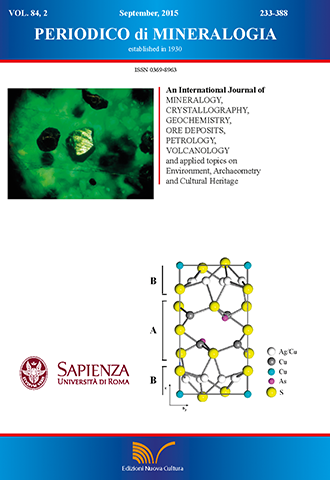Applied mineralogical characterization of ilmenite in Iranian placer deposit
DOI:
https://doi.org/10.2451/2015PM0014Keywords:
Titanium, placer deposit, ilmenite, magnetite, mineralogyAbstract
Kahnouj titanium ore located in the south of iran is a placer deposit with ilmenite and magnetite as the main valuable minerals. There isn’t any ilmenite alteration in Kahnouj deposit; and it exhibits Ferrian to hydrated ilmenite. Microscopic and microprobe analysis show that ilmenite occurs in two forms including ilmenite grains and exsolved lamellae of ilmenite inside magnetite forming ilmenomagnetite texture. It was found that there are some exsolved lamellae of hematite and sphene with thickness finer than 10 mm inside ilmenite. The other heavy minerals which were mainly found inside ilmenite are the negligible amount of rutile and zircone. The microprobe analysis indicate that FeO content of ilmenite crystal lattice is lower than its theoretical amount because of Mg2+ and Mn2+ substitution for Fe2+ while TiO2 content (52.06%) is very close to the theoretical content (52.6%). The maximum content of TiO2 in the purified ilmenite without any gangue minerals is obtained 44%. The low grade of TiO2 in the purified ilmenite is attributed to the exsolutions of shpene and hematite and also the substitution of Mg2+ and Mn2+ in ilmenite crystal lattice. Sphene exsolutions as a source of Ca and Si can affect the titanium dioxide production via chloride and sulphate routes negatively. However, a part of Ti is lost in magnetite concentrate but Magnetite mineral containing about 1.5% V2O3 due to the V3+ substitution for Fe3+ is an important source for extraction of vanadium as a by-product.


